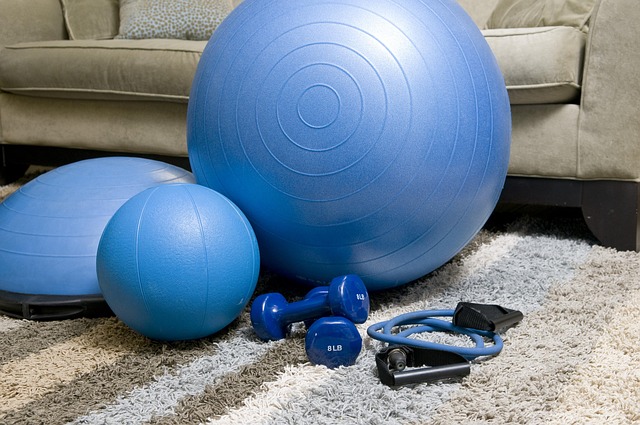As a swimmer, I know the importance of strength and flexibility in the water. That’s why incorporating resistance bands into your training routine can take your performance to the next level. These simple yet effective tools offer a versatile way to target key muscle groups essential for swimming power and endurance.
Whether you’re a beginner looking to improve your strokes or a seasoned athlete aiming to enhance your overall performance, resistance bands can provide the added challenge needed to push your limits. By engaging multiple muscle groups simultaneously, these bands help swimmers develop strength, stability, and flexibility in a swim-specific manner.
In this article, I’ll delve into the benefits of using resistance bands for swimmers, explore various exercises to boost your strength and flexibility, and provide tips on incorporating them into your training regimen for optimal results in the water.
Understanding Resistance Bands for Swimmers
Resistance bands are versatile tools that can greatly benefit swimmers of all levels. They offer a unique way to enhance strength and flexibility specifically tailored to the demands of swimming. When used correctly, resistance bands can target key muscle groups necessary for improving swimming performance.
Benefits of Resistance Bands
I’ve found that incorporating resistance bands into my swim training routine has numerous advantages. These bands provide variable resistance, allowing for a wide range of motion that mimics the movements required in the water. By engaging multiple muscle groups simultaneously, resistance bands help strengthen not only the primary muscles used in swimming strokes but also the stabilizing muscles crucial for proper technique and injury prevention.
How Resistance Bands Work for Swimming Training
In my experience, resistance bands are particularly effective for swim training as they offer a different type of resistance compared to traditional methods like weights. The constant tension provided by the bands throughout the entire range of motion helps build muscle endurance and strength specific to swimming movements. By simulating the resistance encountered in the water, swimmers can improve their stroke mechanics and power output, leading to enhanced performance in the pool.
Choosing the Right Resistance Band
When selecting a resistance band for swim training, consider the following factors:
Types of Resistance Bands
- Flat Resistance Bands: These bands are versatile and suitable for a wide range of exercises, including upper and lower body workouts.
- Tube Resistance Bands: Ideal for targeting specific muscle groups, these bands offer adjustable resistance levels by adjusting the length or tension.
- Loop Resistance Bands: These bands form a continuous loop and are perfect for lower body exercises, such as squats and leg extensions.
- Resistance Level: Opt for bands with varying resistance levels to match your strength and fitness goals.
- Durability: Choose bands made of high-quality materials that can withstand regular use and stretching without snapping.
- Comfort: Select bands with padded handles or non-slip designs for a comfortable grip during workouts.
- Portability: Consider bands that are easy to transport, making them convenient for travel or training on the go.
By considering these factors, you can choose the right resistance band to enhance your swim training routine efficiently.
Incorporating Resistance Bands into Swim Training

Incorporating resistance bands into swim training is a highly effective way to enhance strength, flexibility, and overall performance in the water. When used correctly, resistance bands can target specific muscle groups, improve stroke mechanics, and add a new dimension to your swim workouts.
Strength-Building Exercises
To build strength with resistance bands, include exercises like lateral raises, front raises, and reverse flys to target the muscles crucial for a powerful swim stroke. These exercises engage the shoulders, back, and core muscles, helping swimmers generate more propulsion in the water. By incorporating resistance bands into strength training, I can effectively increase muscle endurance and power for better swim performance.
Flexibility and Mobility Routines
Incorporating flexibility and mobility routines using resistance bands can help swimmers improve their range of motion and prevent injuries. Perform dynamic stretches such as arm circles and leg swings with resistance bands to enhance flexibility in the shoulders, hips, and legs. Including these routines in my training regimen allows me to maintain optimal mobility for smoother and more efficient swimming strokes.
Safety Tips for Using Resistance Bands
When using resistance bands as part of swim training, it’s crucial to ensure safety to avoid injuries and maximize performance. Here are some essential tips to keep in mind:
Proper Techniques to Avoid Injury
I always prioritize proper technique when using resistance bands. It’s important to maintain proper form throughout each exercise to target the intended muscle groups effectively and prevent strain or injury.
Maintaining Your Resistance Bands
I make it a point to regularly inspect my resistance bands for any signs of wear and tear, such as cracks, cuts, or fraying. Proper maintenance ensures longevity and safe usage during training sessions. Additionally, storing the bands in a cool, dry place away from direct sunlight helps preserve their elasticity for consistent performance.


 is a seasoned fitness expert with a special focus on swimming and holistic health strategies. With years of experience as a competitive swimmer and fitness coach, Patricia offers readers a wealth of knowledge on optimizing performance and maintaining a balanced lifestyle. Her writing on Swim Fast Stay Fit reflects her commitment to empowering others with practical advice and motivational insights. Patricia’s approach integrates advanced training techniques with accessible wellness tips, aiming to help individuals achieve their personal fitness goals and enhance their overall quality of life. Through her engaging articles, Patricia inspires readers to embrace a comprehensive approach to health, combining effective exercise routines with mindful nutrition and self-care practices.
is a seasoned fitness expert with a special focus on swimming and holistic health strategies. With years of experience as a competitive swimmer and fitness coach, Patricia offers readers a wealth of knowledge on optimizing performance and maintaining a balanced lifestyle. Her writing on Swim Fast Stay Fit reflects her commitment to empowering others with practical advice and motivational insights. Patricia’s approach integrates advanced training techniques with accessible wellness tips, aiming to help individuals achieve their personal fitness goals and enhance their overall quality of life. Through her engaging articles, Patricia inspires readers to embrace a comprehensive approach to health, combining effective exercise routines with mindful nutrition and self-care practices.
